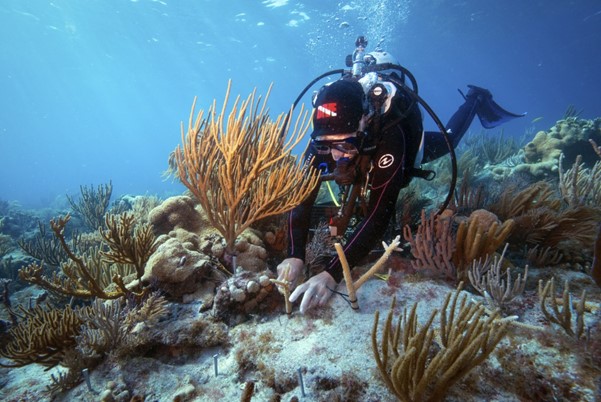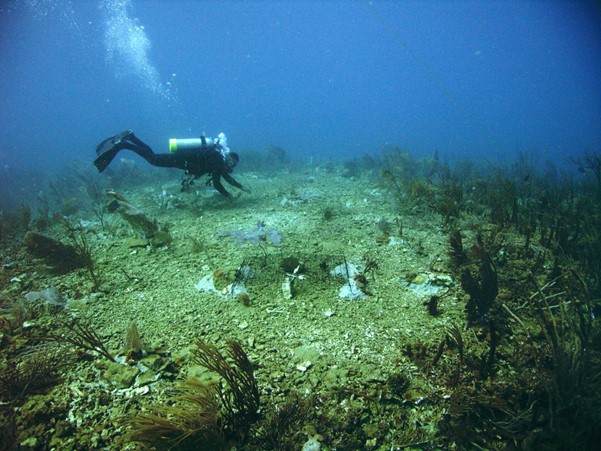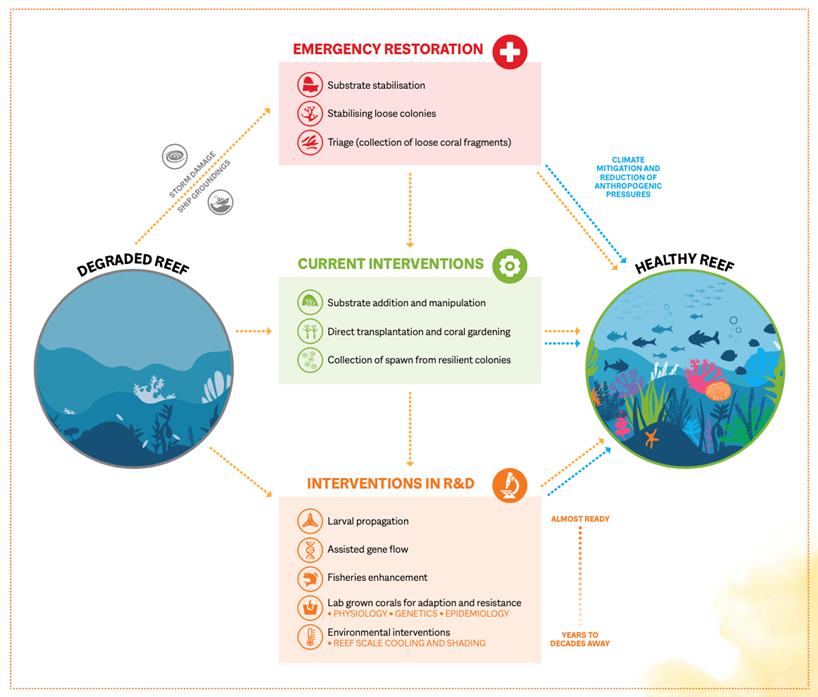Restoration Introduction
Coral reef stakeholders and managers may wish to consider restoration to assist in the recovery of damaged or degraded coral reef sites or reef-associated habitats. Ecological restoration is defined by the Society of Ecological Restoration as “the process of assisting the recovery of an ecosystem that has been degraded, damaged, or destroyed." ref
In the past, the goal of restoration has been to restore an ecosystem back to a historical baseline. This view also implied that the threat(s) responsible for the degradation, damage, or destruction could be removed. However, this may not be possible for all coral reefs because the threat of rising ocean temperatures will continue for decades even if greenhouse gas emission targets are met. The goal of coral reef restoration has therefore shifted towards enhancing coral reef recovery and maintaining key ecosystem processes, functions, and services through the next few decades of climate change.

Outplanting staghorn coral in Dry Tortugas National Park. Photo © Carlton Ward
What is the role of restoration?
Immediate and aggressive action to address climate change, while absolutely critical, is only part of the larger equation to ensuring a future for coral reefs and the ecological and economic services they provide. Restoration is increasingly being embraced as a method to enhance recovery of reef ecosystems to disturbances, mitigate reef degradation, and provide a bridge to support coral reef ecosystems through future climate change conditions.
Restoration needs to be part of a continuum of activities used to support habitats, from reducing local threats to fully recovering ecosystem function. Interventions can be thought of as:
- Proactive (also called “passive” interventions) when their goal is to encourage natural recovery processes. Examples of proactive interventions include marine protected areas and water quality management.
- Reactive (also called “active” interventions) when their goal is to directly assist the recovery of reef function and/or populations, should they not be able to recover naturally. Examples of reactive interventions include coral propagation and outplanting, algal removal, or substrate addition.

Photo © NOAA Restoration Center
Types of Interventions
Coral reef restoration methods were initially developed from methods used in terrestrial ecosystems. For example, the concept of ‘coral gardening’ developed in the 1990s adapted silviculture principles to the mariculture of coral fragments. ref Other methods stemmed from emergency response interventions following disturbances that affected the structural integrity of the reef substrate, such as ship groundings or extreme weather events. ref
More recently, scientists and conservationists have begun to focus on developing techniques that can support coral reef resilience in the face of climate change; however, many of these types of interventions are still in the research and development phase.

